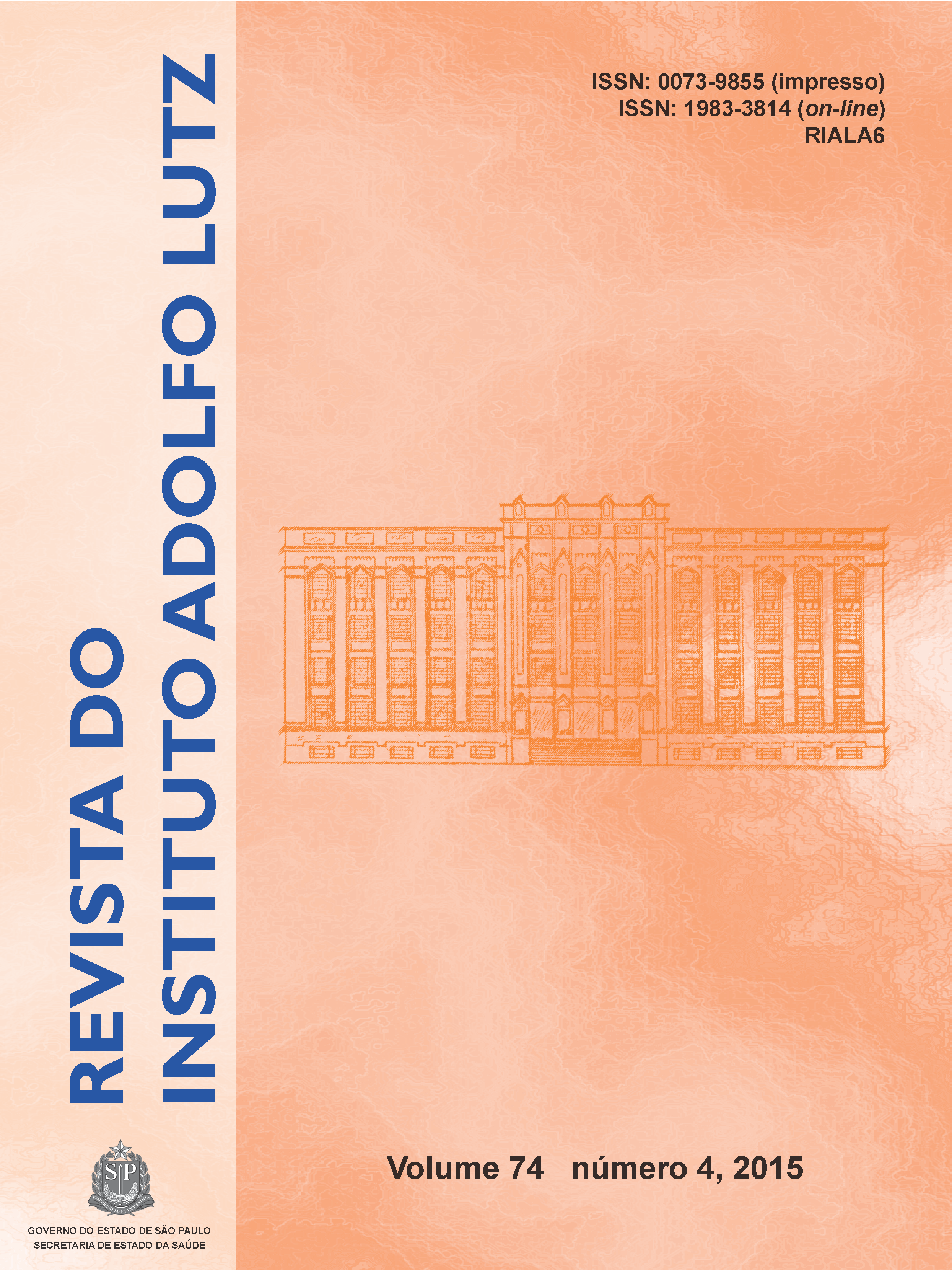Abstract
American cutaneous leishmaniasis (ACL) is an infectious disease caused by Leishmania. Their diagnosis is performed in samples collected from the lesion biopsies, which has to be performed by physicians. For simplifying the sample collection, this study proposes a minimally invasive procedure, by scraping the lesion edges. Laboratory diagnosis by PCR was performed and compared with the microscopic examination, by analyzing 28 samples collected from patients with suspicion of ACL. Sample collected from the lesion edge with a sterile toothpick was divided into two aliquots. One aliquot was analyzed under direct microscopy, and the second by PCR, by using two primer pairs (one for Leishmania genus and other for L. (V.) braziliensis). Of 28 samples, 27 (96.43 %) showed concordant results in both methodologies (eight positive and 20 negative). The PCR methodology is an invaluable tool: (i) to determine the Leishmania species; (ii) to provide an alternative procedure of sample collection, when an authorized professional is not available in the respective health service;and (iii) to propose a minimally invasive procedure for collecting biological material.
References
1. World Health Organization - WHO. Leishmaniasis: Fact sheet N° 375, updated January 2014. WHO; 2015. [Accessed September 2015]. Available at: http://www.who.int/mediacentre/factsheets/fs375/en/index.html.
2. World Health Organization – WHO. Technical Report series. Control of the leishmaniases. Report of a meeting of the WHO. Expert Committee on the Control of Leishmaniases, Geneva, 22–26 March 2010; 949: 1–186. [Accessed September 2015]. Available at: http://whqlibdoc.who.int/trs/WHO_TRS_949_eng.pdf
3. Ministério da Saúde - MS. Manual de vigilância da leishmaniose tegumentar americana. 2. ed., Brasília: Editora do Ministério da Saúde, 2010. [Accessed September 2015]. Available at: http://bvsms.saude.gov.br/bvs/publicacoes/manual_vigilancia_leishmaniose_tegumentar_americana.pdf
4. Centro de Vigilância Epidemiológica do Estado de São Paulo – CVE. [Accessed September 2015]. Available at: ftp://ftp.cve.saude.sp.gov.br/doc_tec/zoo/LTA9806_SH.pdf
5. Silva RA, Mercado VT, Henriques LF, Ciaravolo RM, Wanderley DM. Magnitude and trend of American tegumentary leishmaniasis in the State of São Paulo, Brazil, 1975 to 2008. Rev Bras Epidemiol. 2012;15(3):617-26. [DOI:10.1590/S1415.790X2012000300015].
6. Goto H, Lauletta Lindoso JA. Cutaneous and mucocutaneous leishmaniasis. Infect Dis Clin North Am.2012;26(2):293-307. [DOI: 10.1016/j.idc.2012.03.001].
7. Gomes AHS, Ferreira IM, Lima ML, Cunha EA, Garcia AS, Araujo MF, et al. PCR identification of Leishmania in diagnosis and control of canine leishmaniasis. Vet Parasitol. 2007;144(3-4):23441. [DOI:10.1016/j.vetpar.2006.10.008]
8. Gomes AHS, Armelin IM, Menon SZ, Pereira-Chioccola VL. Leishmania (V.) braziliensis: detection by PCR in biopsies from patients with cutaneous leishmaniasis. Exp Parasitol. 2008;119(3):319-24. [DOI: 10.1016/j.exppara.2008.02.014].
9. Passos VM, Fernandes O, Lacerda PA, Volpini AC, Gontijo CM, Degrave W, et al. Leishmania (Viannia) braziliensis is the predominant species infecting patients with American cutaneous leishmaniasis in the state of Minas Gerais, Southeast Brazil. Acta Trop. 1999;72(3):251–8. [DOI:10.1016/S0001-706X998000100-4].
10. Harris E, Kropp G, Belli A, Rodriguez B, Agabian N. Single-step multiplex PCR assay for characterization of New World Leishmania complexes. J Clin Microbiol.1998;36(7):1989–95.
11. Lee CN, Cavanagh HM, Lo ST, Ng CS. Human papillomavirus infection in non-neoplastic uterine cervical disease in Hong Kong. Br J Biomed Sci. 2001;58 (2):85-91.
12. Isaza DM, Arboleda M, Restrepo M, McCann SH, Barker DC. Validation of the polymerase chain reaction for the diagnosis of human cutaneous leishmaniasis in north-west Colombia. Trans R Soc Trop Med Hyg. 2002;96Suppl1:S165-8. [DOI: 10.1016/S0035-9203(02)90043-X].
13. Venazzi EA, Roberto AC, Barbosa-Tessmann IP, Zanzarini PD, Lonardoni MV, Silveira TG. Polymerase chain reaction with lesion scrapping for the diagnosis of human American tegumentary leishmaniasis. Mem Inst Oswaldo Cruz. 2006;101(4):427-30. [DOI: 10.1590/S0074-02762006000400014].

This work is licensed under a Creative Commons Attribution 4.0 International License.
Copyright (c) 2016 Instituto Adolfo Lutz Journal
